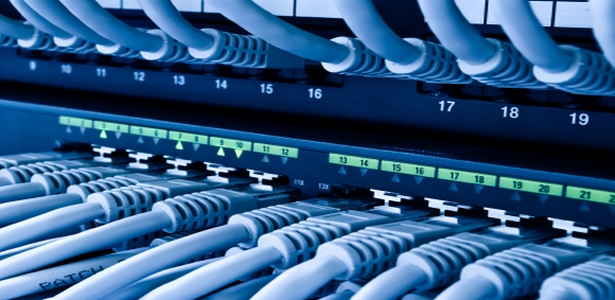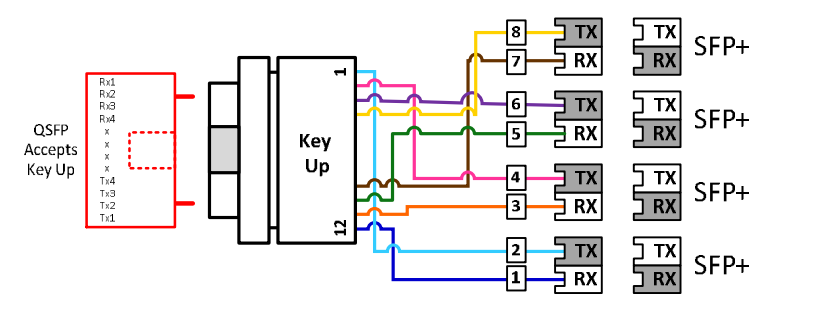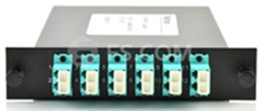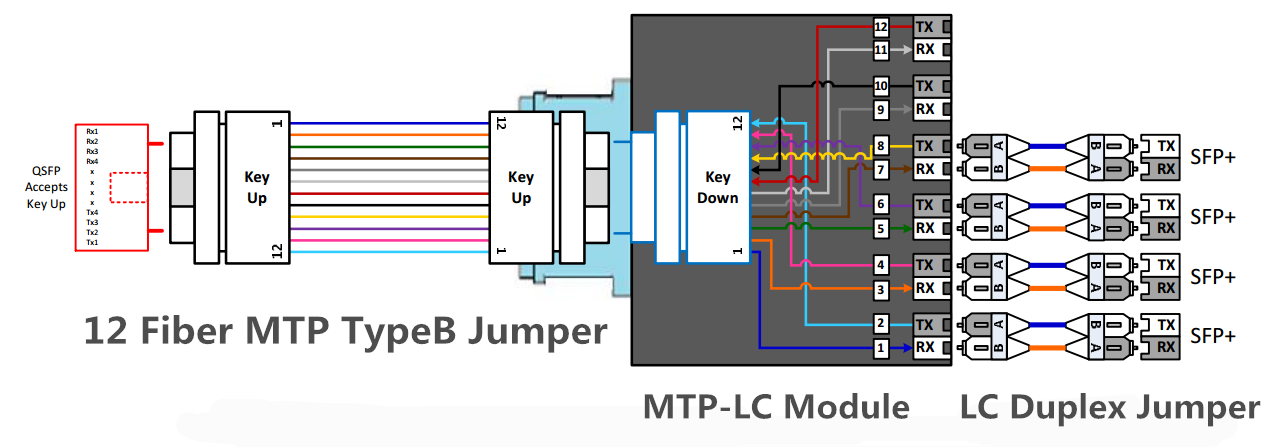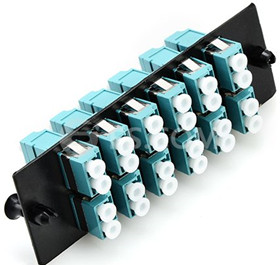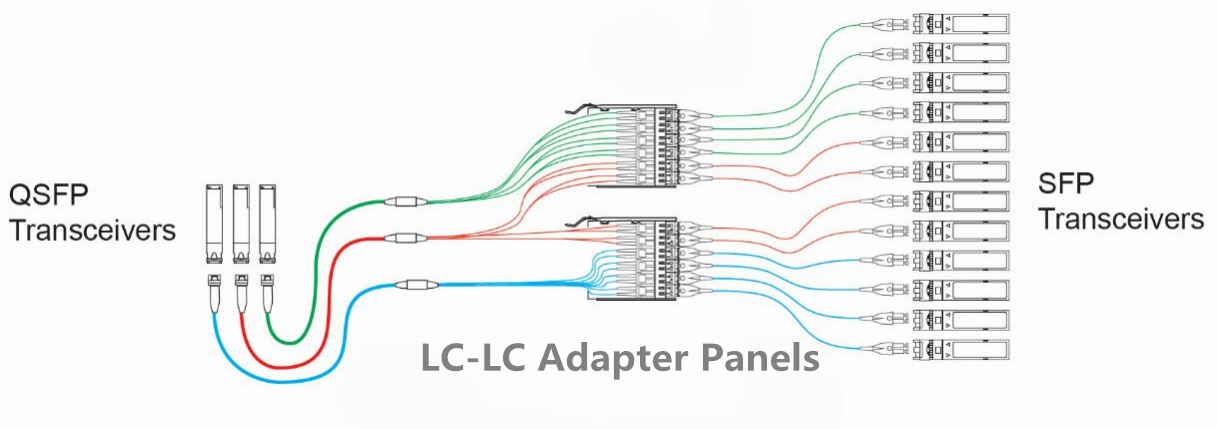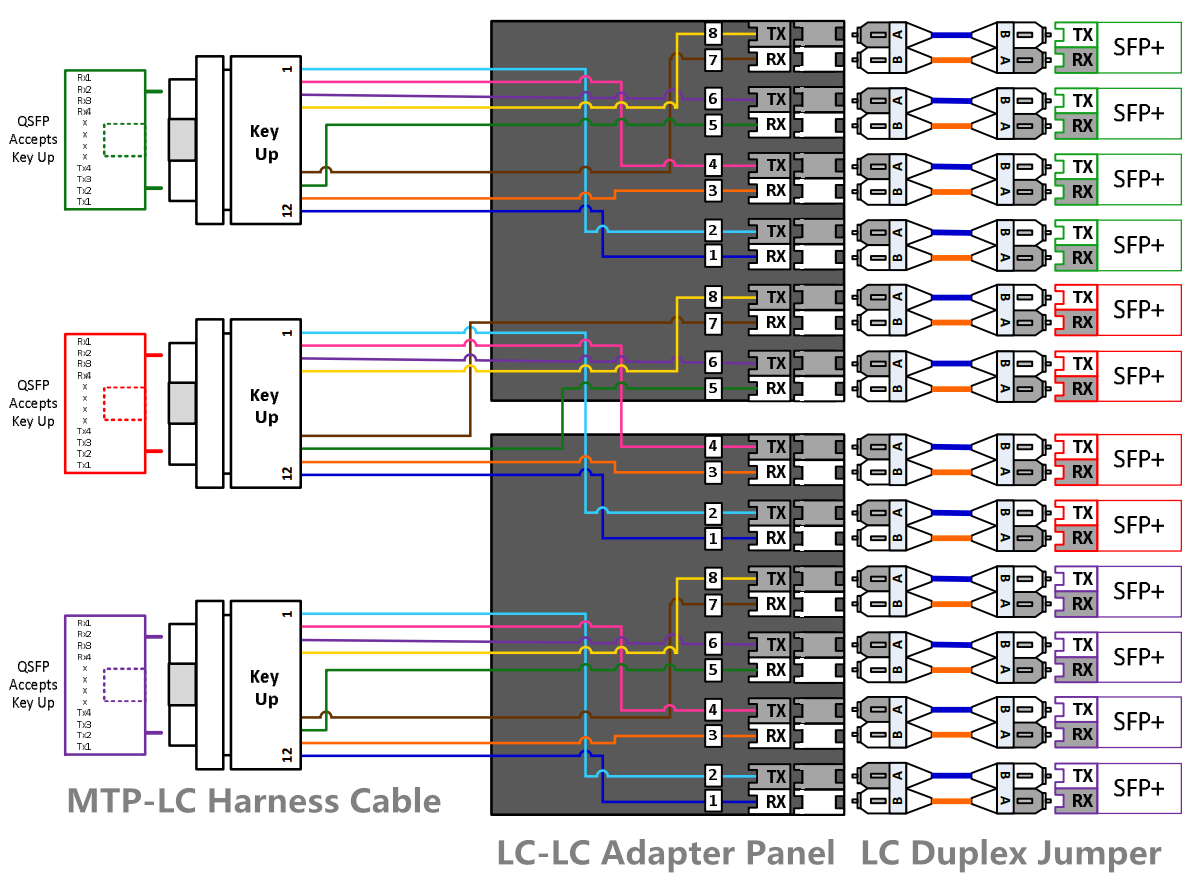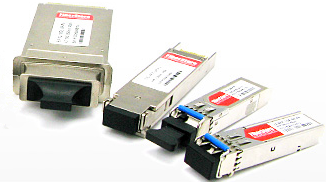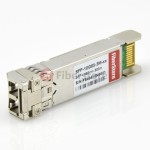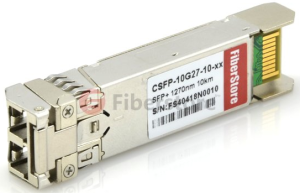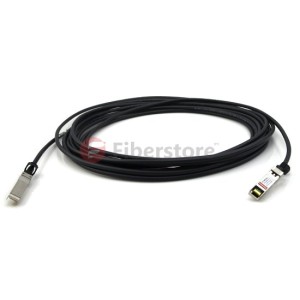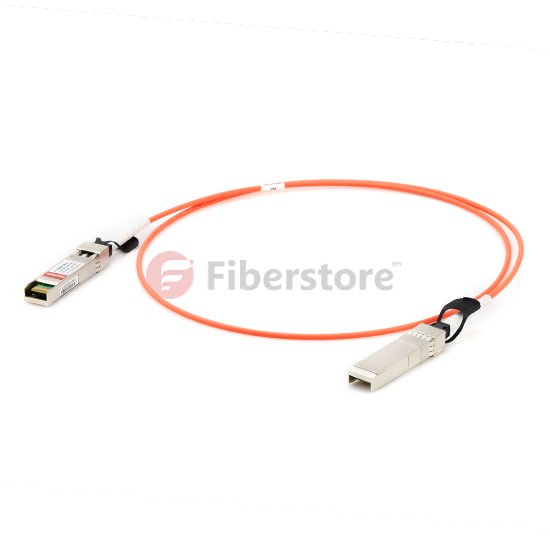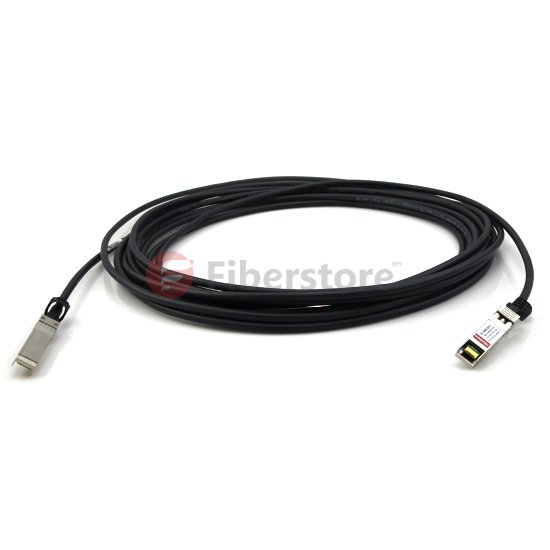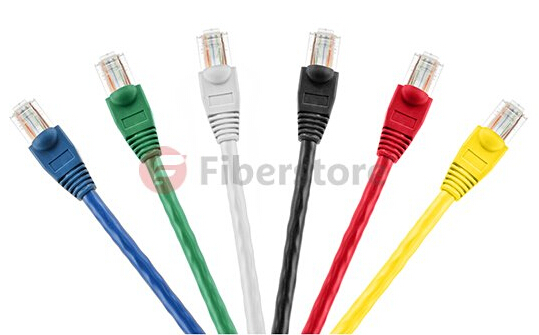As we know, a SFP module just looks the same as the SFP+ module. And most switches can both support SFP module and SFP+ module. So, do these two modules really refer to the same one? What’s the difference between SFP vs SFP+?
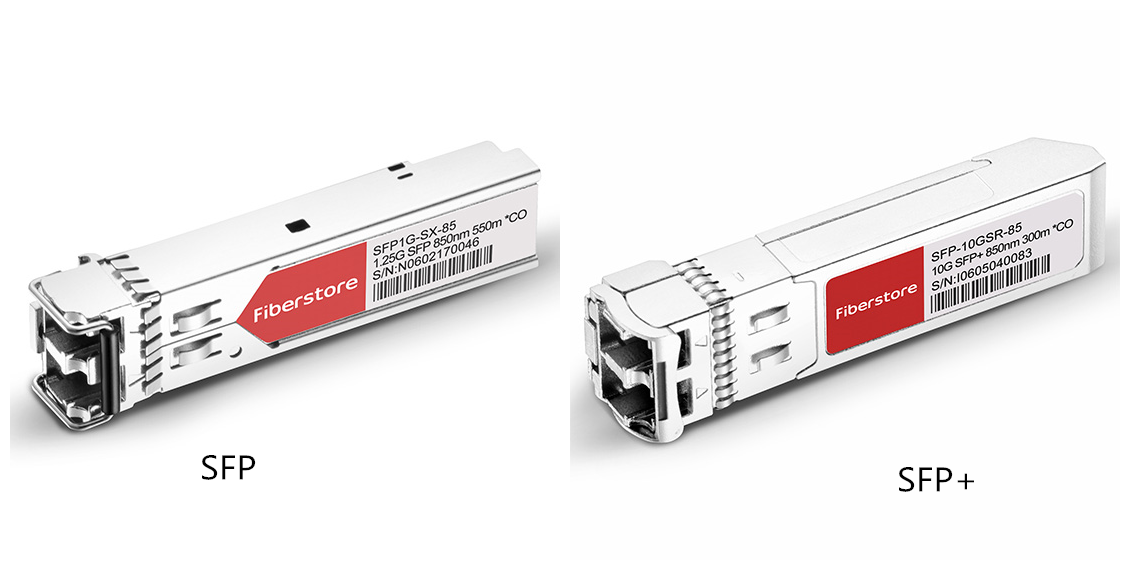
SFP vs SFP+: SFP Definition
SFP stands for Small Form-factor Pluggable. It is a hot-pluggable transceiver that plugs into the SFP port of a network switch and supports SONET, Gigabit Ethernet, Fibre Channel, and other communications standards. SFP specifications are based on IEEE802.3 and SFF-8472. They are capable of supporting speeds up to 4.25 Gbps. Due to its smaller size, SFP replaces the formerly common gigabit interface converter (GBIC). Therefore SFP is also called Mini-GBIC. By choosing different SFP module, the same electrical port on the switch can connect to different fiber types (multimode or single-mode) and different wavelengths.
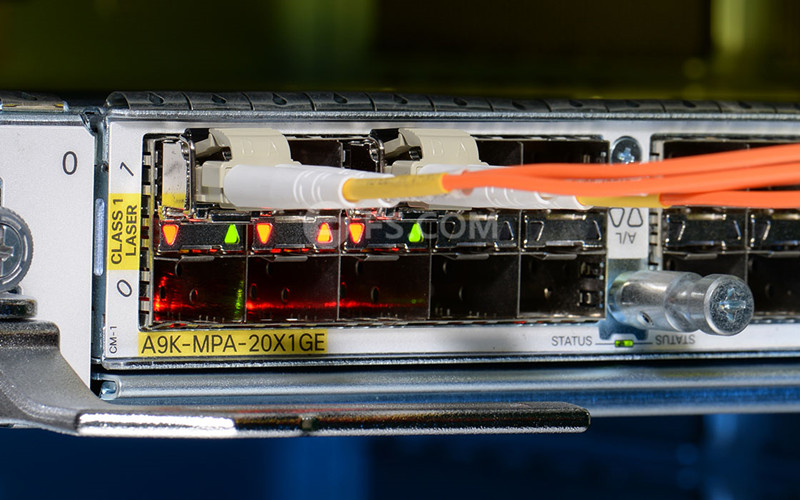
SFP vs SFP+: SFP+ Definition
Since SFP supports only up to 4.25 Gbps, SFP+ that supports data rates up to 16 Gbps was later introduced. In fact, SFP+ is an enhanced version of the SFP. The SFP+ specifications are based on SFF-8431. In today’s most applications, SFP+ module usually supports 8 Gbit/s Fibre Channel, 10 Gigabit Ethernet and Optical Transport Network standard OTU2. In comparison to earlier 10 Gigabit Ethernet XENPAK or XFP modules, SFP+ module is smaller and becomes the most popular 10 Gigabit Ethernet module in the market.
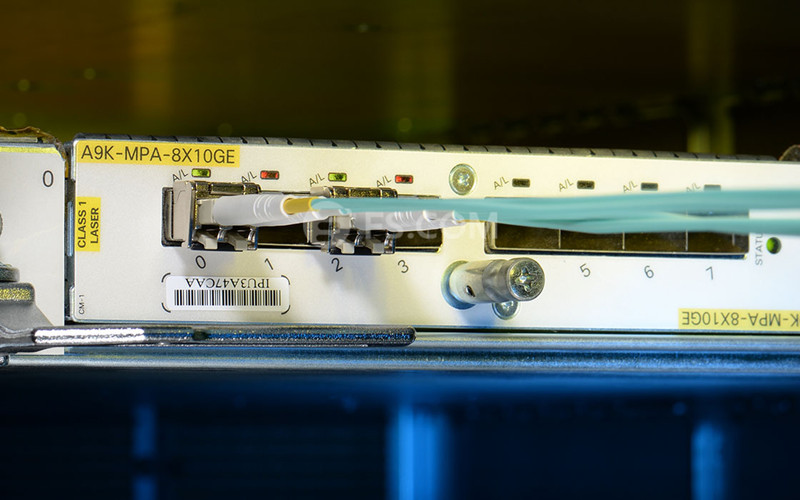
SFP vs SFP+
Review the SFP and SFP+ definition mentioned above, we can know that the main difference between SFP and SFP+ is the data rate. And due to different data rate, the applications and transmission distance is also different.
Ethernet Application
| SFP (1Gbps) | SFP+ (10Gbps) |
| 1000BASE-SX SFP 850nm 550m
1000BASE-LX/LH SFP 1310nm 20km 1000BASE-EX SFP 1310nm 40km 1000BASE-ZX SFP 1550nm 80km |
10GBASE-SR SFP+ 850nm 300m
10GBASE-LRM SFP+ 1310nm 220m 10GBASE-LR SFP+ 1310nm 10km 10GBASE-ER SFP+ 1550nm 40km 10GBASE-ZR SFP+ 1550nm 100km |
Fiber Channel Application
| SFP (2G, 4G) | SFP+ (8G) |
| 2.125Gbps:
2G Fibre Channel SFP 1310nm 2km/15km/20km/40km 2G Fibre Channel SFP 1510nm 80km 4.25Gbps: 4G Fibre Channel SFP 850nm 150m 4G Fibre Channel SFP 1310nm 5km/10km/15km/20km |
8.5Gbps:
8G Fibre Channel SFP+ 850nm 150m 8G Fibre Channel SFP+ 1310mn 10km/20km/40km 8G Fibre Channel SFP+ 1510nm 80km |
SONET/SDH Application
| SFP (155Mbps, 622Mbps, 2.5Gbps) | SFP+ (10G) |
| 155Mbps:
OC-3/STM-1 1310nm 2km/15km/40km OC-3/STM-1 1510nm 80km 622Mbps: OC-12/STM-4 1310nm 500m/2km/15km/40km OC-12/STM-4 1510nm 80km 2.5Gbps: OC-48/STM-16 1310nm 2km/15km/40km OC-48/STM-16 1510nm 80km |
OC-192/STM-64 850nm 300m
OC-192/STM-64 1310nm 2km/10km/20km/40km OC-192/STM-64 1510nm 80km |
As we’ve explained the difference of SFP vs SFP+. Usually, SFP module plugs into SFP port of the switch and SFP+ module plugs into SFP+ port of the switch. But, sometimes SFP module can also be plugged into SFP+ port. Which SFP or SFP+ module should you choose all depends on your switch types. Fiberstore is a reliable SFP transceiver module manufactures, all SFP module and SFP+ module types are available in FS.COM. Besides, SFP+ cable is also provided. What’s more, the price of SFP module and SFP+ module is lower than many other manufactures. SFP test is strict in FS.COM. Matching fiber patch cable is also available.
Related Article: Compatible SFPs for Ubiquiti EdgeSwitch and UniFi switch
Related Article: SFP Module: What’s It and How to Choose It?
Related Article: Understanding Video SFP Transceivers



